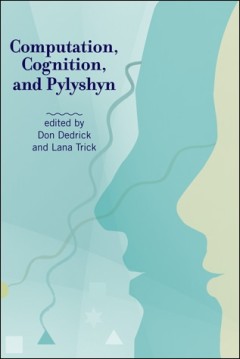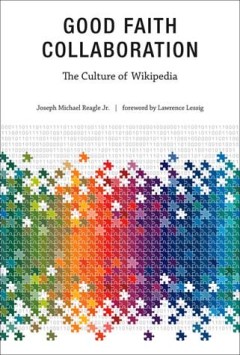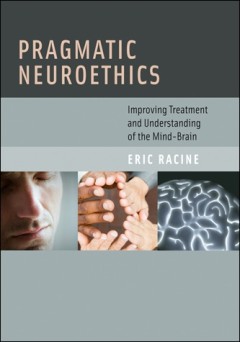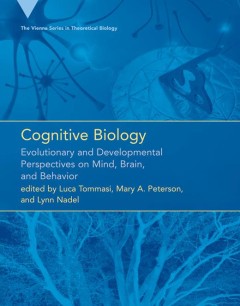Filter by

Nanoscale: Visualizing an Invisible World
The world is made up of structures too small to see with the naked eye, too small to see even with an electron microscope. Einstein established the reality of atoms and molecules in the early 1900s. How can we see a world measured in fractions of nanometers? (Most atoms are less than one nanometer, less than one-billionth of a meter, in diameter.) This beautiful and fascinating book gives us a …
- Edition
- -
- ISBN/ISSN
- 9780262322522
- Collation
- -
- Series Title
- -
- Call Number
- -

Computation, Cognition, and Pylyshyn
"A Bradford book."A collection of cutting-edge work on cognition and a celebration of a foundational figure in the field.OCLC-licensed vendor bibliographic record.
- Edition
- -
- ISBN/ISSN
- 9780262255196
- Collation
- 1 online resource (xvii, 344 pages) :illustrations
- Series Title
- -
- Call Number
- -

Science in Environmental Policy: The Politics of Objective Advice
An analysis of the role & influence of scientists at the agenda-setting, legislative & implementation stages of environmental policy making, Keller draws on political theory & on empirical evidence from scientific reports, news coverage Congressional hearings & interviews.OCLC-licensed vendor bibliographic record.
- Edition
- -
- ISBN/ISSN
- 9780262258982
- Collation
- 1 online resource (xi, 278 pages) :illustrations.
- Series Title
- -
- Call Number
- -

Beyond Red and Blue: How Twelve Political Philosophies Shape American Debates
Why Americans do not divide neatly into red and blue or right and left but form coalitions across party lines on hot-button issues ranging from immigration to same-sex marriage.OCLC-licensed vendor bibliographic record.
- Edition
- -
- ISBN/ISSN
- 9780262254953
- Collation
- 1 online resource (375 pages)
- Series Title
- -
- Call Number
- -

Science in Democracy: Expertise, Institutions, and Representation
Mark Brown draws on canonical & contemporary political & scientific theory, from Machiavelli to Latour, to throw light on how scientific expertise may be brought into a representative democracy.OCLC-licensed vendor bibliographic record.
- Edition
- -
- ISBN/ISSN
- 9780262258647
- Collation
- 1 online resource (xvi, 354 pages)
- Series Title
- -
- Call Number
- -

ThermoPoetics: Energy in Victorian Literature and Science
In ThermoPoetics, Barri Gold sets out to show us how analogous, intertwined, and mutually productive poetry and physics may be. Charting the simultaneous emergence of the laws of thermodynamics in literature and in physics that began in the 1830s, Gold finds that not only can science influence literature, but literature can influence science, especially in the early stages of intellectual devel…
- Edition
- -
- ISBN/ISSN
- 9780262274005
- Collation
- -
- Series Title
- -
- Call Number
- -

Good Faith Collaboration: The Culture of Wikipedia
Wikipedia, the online encyclopedia, is built by a community - a community of Wikipedians who are expected to "assume good faith" when interacting with one another. In Good Faith Collaboration, Joseph Reagle examines this unique collaborative culture;Wikipedia, says Reagle, is not the first effort to create a freely shared, universal encyclopedia; its early twentieth-century ancestors include Pa…
- Edition
- -
- ISBN/ISSN
- 9780262289719
- Collation
- -
- Series Title
- -
- Call Number
- -

Ignorance and Surprise: Science, Society, and Ecological Design
In this work, Matthias Gross examines the relationship between ignorance and surprise, proposing a conceptual framework for handling the unexpected and offering case studies of ecological design that demonstrate the advantages of allowing for surprises and including ignorance in the design and negotiation processes.OCLC-licensed vendor bibliographic record.
- Edition
- -
- ISBN/ISSN
- 9780262265911
- Collation
- 1 online resource (xii, 240 pages) :illustrations, maps.
- Series Title
- -
- Call Number
- -

Pragmatic Neuroethics: Improving Treatment and Understanding of the Mind-Brain
A survey of the emerging field of neuroethics that calls for a multidisciplinary, pragmatic approach for tackling key issues and improving patient care.OCLC-licensed vendor bibliographic record.
- Edition
- -
- ISBN/ISSN
- 9780262265904
- Collation
- 1 online resource (xix, 267 pages) :illustrations.
- Series Title
- -
- Call Number
- -

Cognitive Biology: Evolutionary and Developmental Perspectives on Mind, Brain…
This text is an overview of current research at the intersection of psychology and biology which integrates evolutionary and developmental data and explanations.OCLC-licensed vendor bibliographic record.
- Edition
- -
- ISBN/ISSN
- 9780262255264
- Collation
- 1 online resource (x, 342 pages) :illustrations.
- Series Title
- -
- Call Number
- -
 Computer Science, Information & General Works
Computer Science, Information & General Works  Philosophy & Psychology
Philosophy & Psychology  Religion
Religion  Social Sciences
Social Sciences  Language
Language  Pure Science
Pure Science  Applied Sciences
Applied Sciences  Art & Recreation
Art & Recreation  Literature
Literature  History & Geography
History & Geography